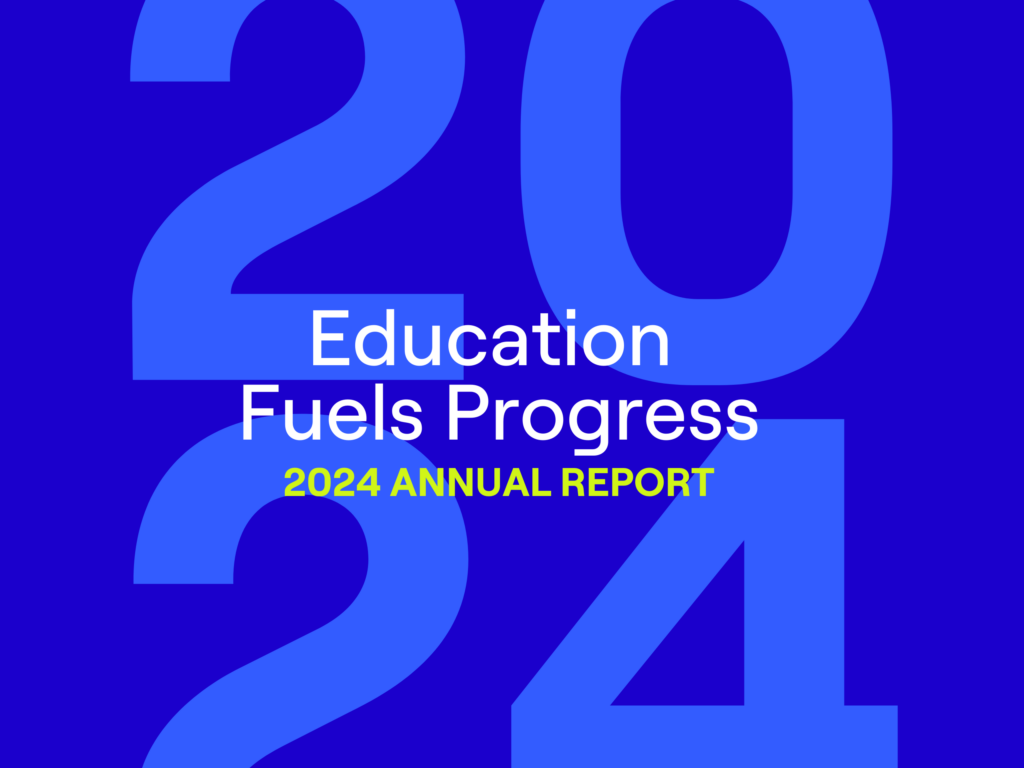This post has been updated with new information as of October 21, 2024.
Despite signs of academic recovery, new data reveals that public school students, especially younger ones, are significantly behind, with achievement gaps widening between low-income and affluent students. As school leaders urgently seek solutions, it’s worth asking: What if the answers have been right in front of us all along — in innovative public schools with exceptional results?
At NewSchools, our experience with 122 innovative public schools across the country demonstrates the power of breaking from traditional molds. Serving a diverse student body, including a higher percentage of students of color, low-income students, and English learners, these schools often outperform traditional models. They provide students with a strong academic foundation and cultivate essential mindsets, habits, and skills needed for success in school and life.
Before the pandemic, students in our schools were achieving impressive results, gaining the equivalent of an extra 91 days of learning each year. Like many, our schools faced challenges during the pandemic, with just 15% of students meeting their growth goals in math and reading in the 2020-21 school year. Now our schools are making a comeback. Over the past two school years, around 40% of our students have reached their pre-COVID growth goals, a statistically significant increase. This progress reflects the resilience and recovery of our students, driven by deliberate school designs, instructional practices, and approaches to educator development that can and should be adopted more broadly.
To better understand the success of our schools, we partnered with Bellwether, a leading education researcher. We went beyond test scores and student surveys to capture the full experiences of our students, teachers, and families. The Bellwether team conducted 29 school visits, 127 classroom observations, and 569 interviews. Through this process, we identified a common blueprint for success, built on four foundational strategies: visionary leadership, nurturing relationships, effective implementation, and learning and continuous improvement.

1. Visionary Leadership
Every successful school in our sample study is led by visionary leaders who understand that true educational excellence requires the involvement of all stakeholders — students, teachers, families, and community members — from the start. These leaders engage the community to co-create a shared vision of success that coherently aligns instruction, culture, and operations with the specific needs and aspirations of their community. They also ensure that this vision is clearly communicated and understood by everyone involved, fostering a culture of shared responsibility and commitment to the school’s success.

2. Nurturing Relationships
The foundation of any effective school is the strength of its relationships among students, among educators, and between teachers and students. In our schools, leaders prioritize building trust and creating caring environments that encourage both students and teachers to excel. By implementing practices such as student advisories, community circles, and regular feedback loops among staff, these schools create supportive and inclusive spaces that promote deeper learning and engagement. Positive relationships among staff and strong modeling are equally important as student-to-teacher relationships, as they shape the overall school culture and support interactions with students and families.

3. Effective Implementation
Visionary leadership and nurturing relationships are crucial, but without effective implementation, they remain just good ideas. The schools in our portfolio stand out for their ability to put ideas into action. At the most effective schools, systems tightly align to core instructional and cultural practices. This includes establishing clear, intentional routines, codifying practices and policies, investing in ongoing professional development for teachers, embracing distributed leadership – where responsibilities are shared among a network of leaders, and maintaining consistent standards for both students and staff. Effective implementation ensures that the school’s vision and commitment to strong instruction is realized in every classroom and every interaction.

4. Learning and Continuous Improvement
Our top-performing schools are marked by a relentless commitment to learning and improvement. These schools use data — not just test scores, but also feedback from students, parents, and teachers — to continually refine their practices. This culture of reflection and data-driven decision-making allows schools to respond to challenges swiftly and effectively, always with the goal of better serving their students. A key part of this strategy is hiring people who are eager to learn and grow, and helping them become experts at collecting, analyzing, and responding to data effectively.
*The findings and conclusions contained within are those of the authors and do not necessarily reflect positions or policies of the Bill and Melinda Gates Foundation.
The evidence is clear: when leaders embrace these four strategies, schools not only start strong but also sustain deep engagement and learning over time. Feedback from our schools speaks volumes: teachers praise the strong leadership and supportive environments, while students report a profound sense of belonging and engagement with more rigorous and relevant coursework. Parents and students alike commend the positive, inclusive climate and the preparation for college and careers.
In addition to capturing the four strategies that all school leaders are putting in place, Bellwether created a catalog of practices to surface a range of choices school leaders are making to achieve their goals. Teams are often weaving together complementary practices (e.g. small group instruction and data-driven decision-making) to achieve strong results. Bellwether’s research confirms what we have known all along: the best innovation combines new and proven practices, tailored to each school community’s needs. We hope schools can use these approaches to better organize their academic programs, build community, and support staff.
By investing in visionary leadership, nurturing relationships, effective implementation, and continuous improvement rooted in strong instruction, we do more than address learning recovery — we build stronger connections between schools and students, empowering them to reach new heights.
Read the full report: Building Better Schools: Insights from Innovative Public Schools, made possible with the support of the Bill and Melinda Gates Foundation*.

Mia Howard
Mia Howard is a Managing Partner leading the Innovative Schools investment team. She and her team support educators with bold visions for new schools that embrace equity, innovation, and an expanded definition of student success.



